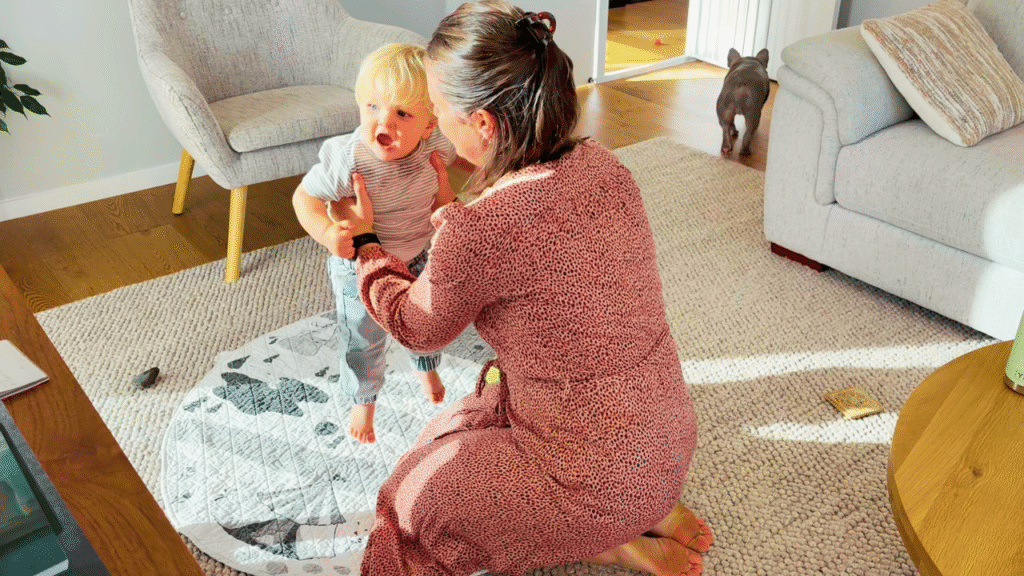
One of the most grounding things I’ve done for our family is creating a predictable, nurturing toddler daily rhythm to our days. As a parent of a toddler, I’ve seen how rhythm brings ease, connection, and calm – not just for my child, but for me too.
Inspired by Waldorf principles and shaped by the seasons, our rhythm is gentle, flexible, and filled with purpose. In this post, I’m walking you through a full day at home with my toddler – a real-life example of how rhythm and flow look in our family, and why this approach has made such a difference.
Before Sunrise: A Gentle Start with a Busy Toddler
Our days begin before the sun. I quietly offer my toddler a small protein-rich snack while it’s still dark, turning on soft lights and beginning to prepare our home for the day ahead. These early moments are tender and slow – a bridge between sleep and wakefulness.
We head to our special nursing chair for a peaceful feed, followed by simple morning tasks like making the bed together. These rhythms help my toddler see the care and repetition that shape home life – something Waldorf philosophy encourages deeply.
Morning Light & Nature Time
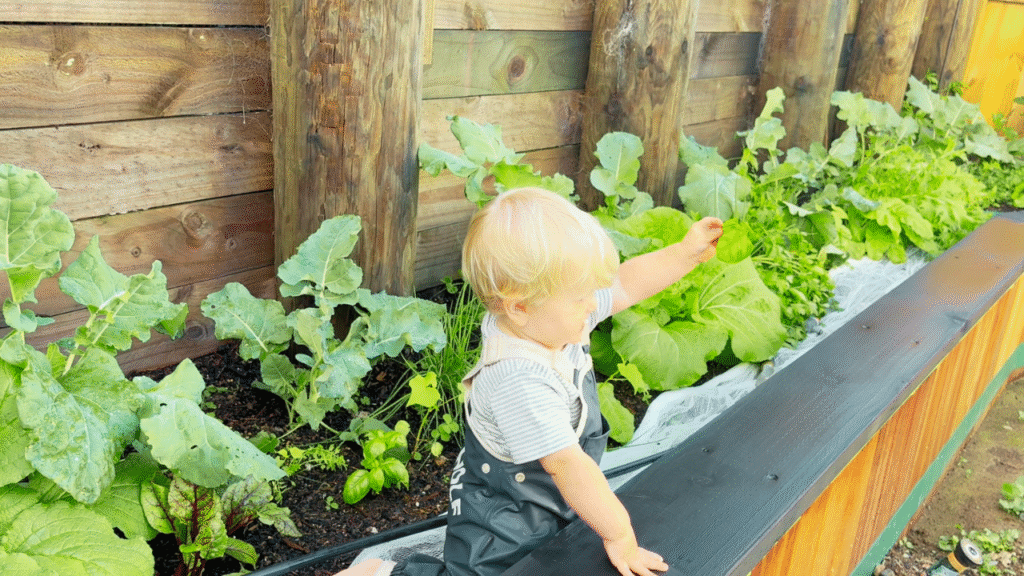
Once we’re dressed (often in waterproof gear, because nature doesn’t wait for perfect weather), we head outside to greet the day. The morning light helps regulate our circadian rhythms, and time outdoors sets a peaceful tone.
We often pick herbs from the garden for breakfast – a tiny ritual that keeps us tuned into the season and the land around us. Then, while my toddler plays on the kitchen floor nearby, I cook breakfast.
Our meals are always grounding and nourishing. Today, it’s scrambled eggs, leftover sweet potato hash, and homemade kimchi – protein-rich and probiotic-packed to support energy and digestion. For more meal ideas see my posts here.
Circle Time & Connection
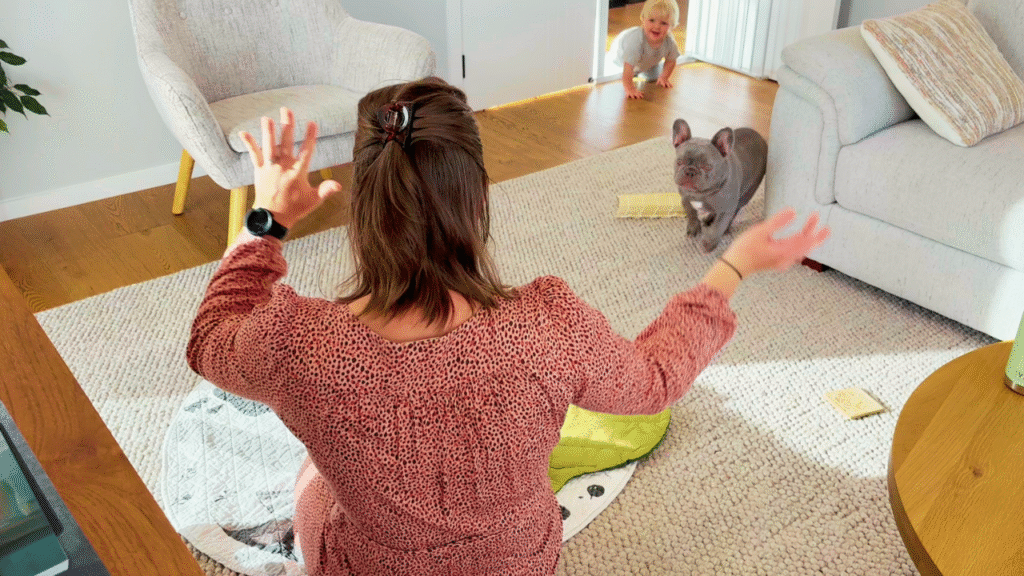
After breakfast, we gather for a short circle time – a cornerstone of Waldorf rhythm. Even at a toddler stage, circle time offers structure, repetition, and connection.
We sing seasonal songs with hand motions, recite short poems, and tell a little story. This is not “teaching” in the traditional sense – it’s more about connecting through rhythm and language. It helps signal the shift into a new phase of the day and fills my toddler’s cup with loving attention.
Mid-Morning Nature Walk
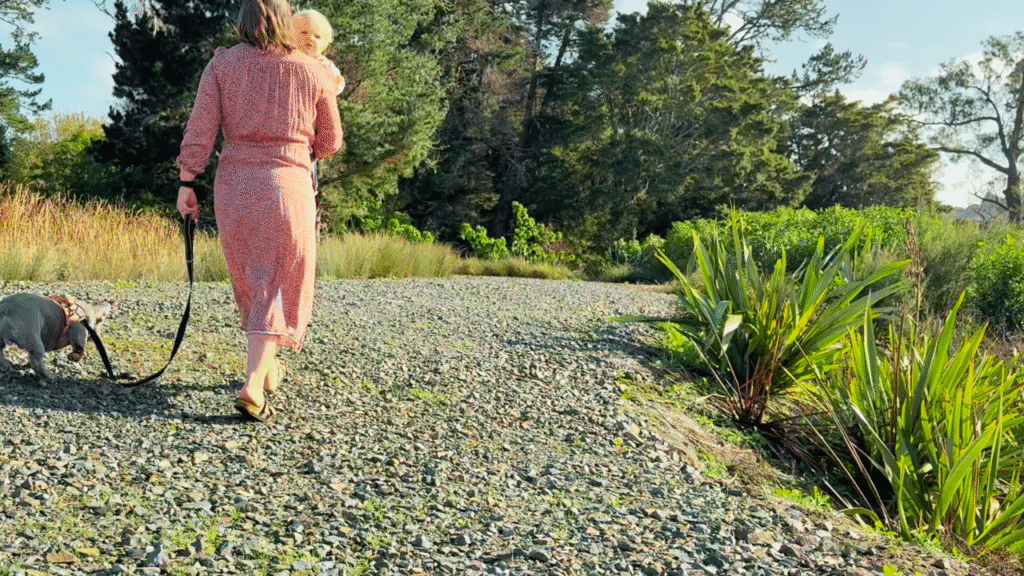
Then it’s time to move. We head out on a nature walk with our treasure bag in hand. My toddler explores freely while I gently guide him to notice leaves changing color, the coolness in the air, or birds overhead. We collect seasonal treasures like feathers, stones, and leaves to bring home and explore later.
Often, my toddler naps on the way home. Our puppy usually rests then too – a natural rhythm of pause after movement. I use this time to reset the home and prepare for the afternoon.
Midday Meal & Rest
Midday is all about quiet independence. After lunch – usually something warm and grounding – we tidy up together. My toddler loves to help with small tasks like wiping his tray or putting scraps in the compost.
Afterward, he takes a longer nap. I keep his sleep rhythm consistent by following the same routine each time: a lullaby, his sleep sack, white noise, and a darkened room.
Afternoon Tea & Creative Time in our Toddler Daily Rhythm
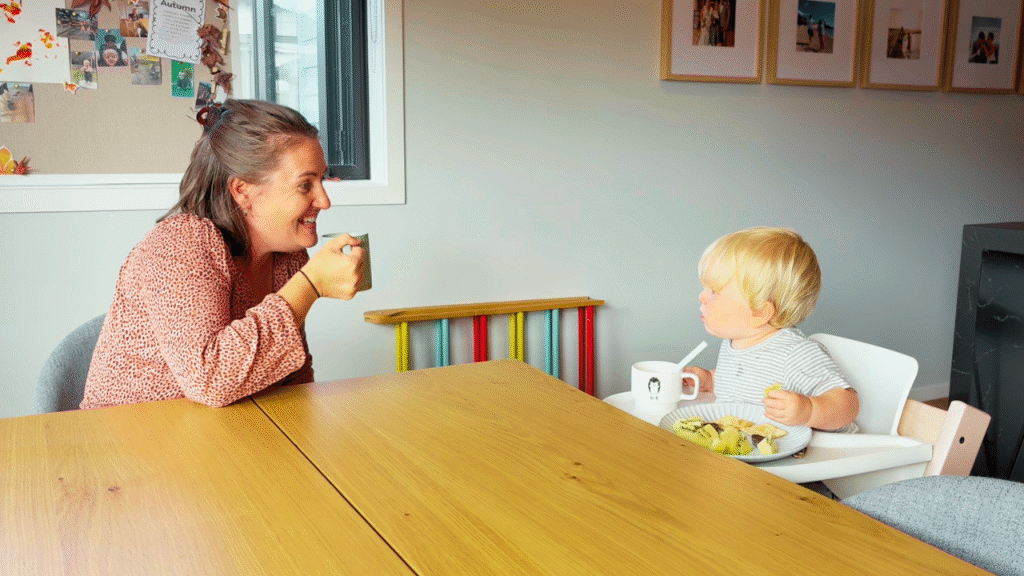
When he wakes, we have a sweet reconnection ritual: afternoon tea. It’s simple – a warm drink or snack, shared at the table – but it signals a shift back into togetherness.
After tea, we explore something creative. Today, we’re painting the rocks we collected on our walk using autumn colors. My toddler also paints on paper beside me, mimicking and exploring in his own way.
This kind of artistic play isn’t about output – it’s about rhythm, process, and the joy of working with our hands. Waldorf education emphasizes this kind of creativity as a natural expression of a child’s inner life.

Evening Transition
The arrival of my husband brings a new rhythm – excitement and reconnection. We collect the mail together, and my toddler posts it into our ‘inside mailbox’ – a sweet ritual he looks forward to every day.
As evening settles, I prepare a warm bath with Epsom salts – a calming sensory experience that helps my toddler unwind. He often helps fold laundry or returns to independent play while I prepare dinner.
Bedtime Flow
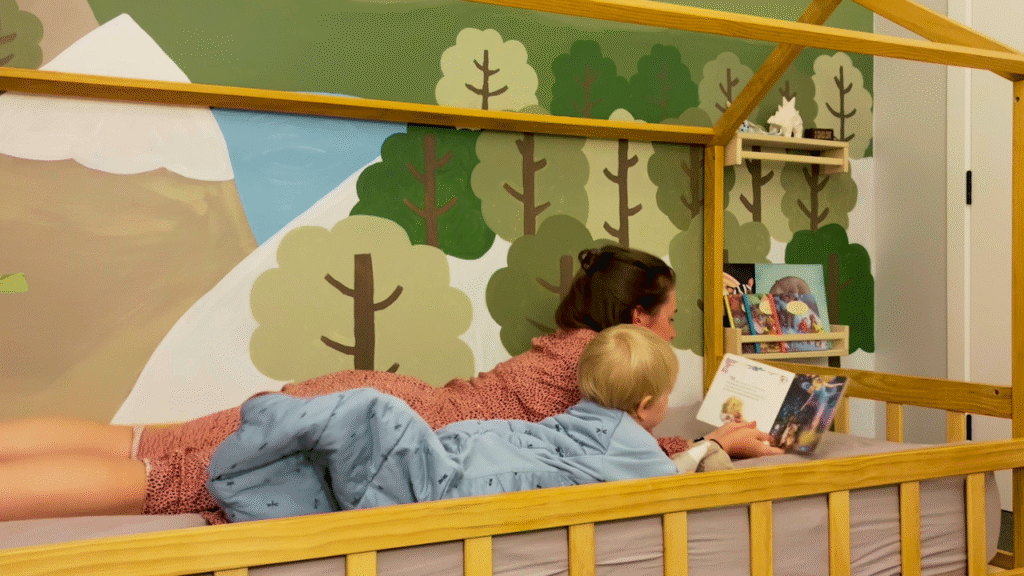
Our early family dinner is simple and grounding. After dinner, we follow our consistent bedtime routine – the same rhythm we use for naps, helping his body and mind feel safe and ready for rest.
I sing the same lullaby, help him into his sleep sack, read a short book, turn on the white noise, and then turn out the lights.
Why Rhythm Matters for Toddlers
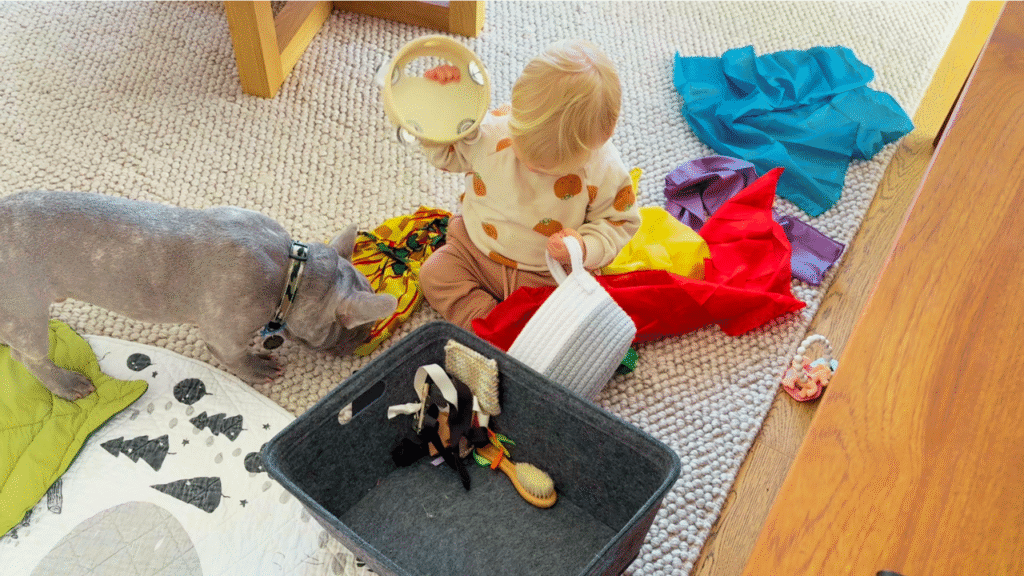
A toddler daily rhythm like this – anchored in Waldorf ideals but adapted to our family’s needs helps us move through the day with greater ease. My toddler knows what’s coming next. His body can rest when it’s time to rest and then move when it’s time to move.
And I feel more grounded too. I know our flow, can prepare for it and don’t have to reinvent the wheel each day.
More than a schedule, rhythm is a living thing – shaped by the seasons, our family energy, and the natural rise and fall of the day.
Want to Create Your Own Toddler Daily Rhythm?
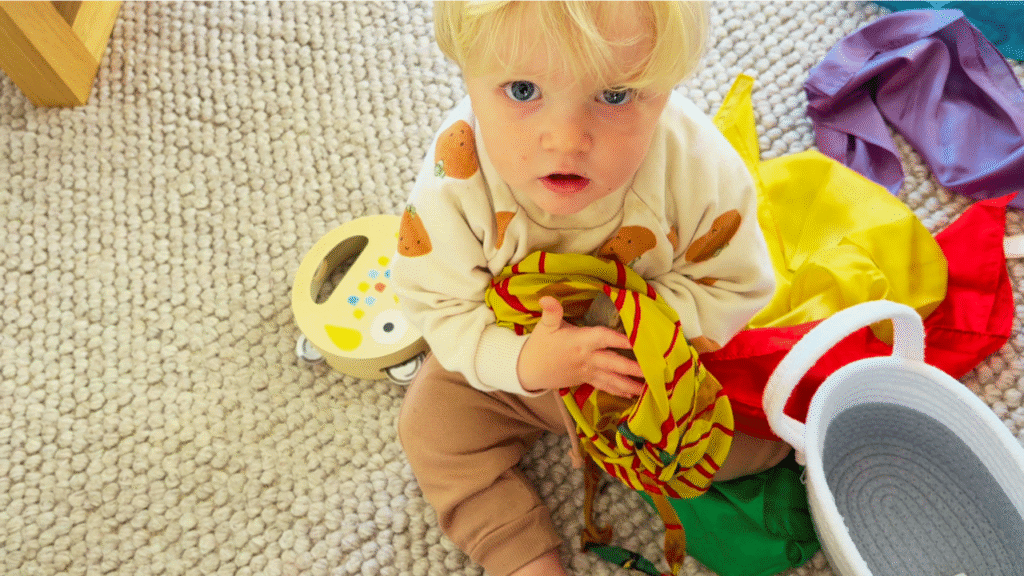
1. Begin with Anchors – Not a Schedule
Start by identifying anchor points in your day – like waking, meals, naps, and bedtime. These become your stable touchpoints around which everything else can gently flow.
Think: “We always have breakfast together,” not “Breakfast is at exactly 7:30am.”
2. Choose a Morning Ritual to Start the Day with Intention
Create a simple, beautiful moment that signals the start of your day together. This could be:
- Circle time with a seasonal song or story
- Lighting a candle and reading a verse
- Sitting in a special chair to breastfeed and connect
- A morning nature walk
This sets the tone and helps toddlers feel safe in the predictability.
3. Flow Between “In-Breath” and “Out-Breath” Activities
Waldorf rhythms follow a natural ebb and flow of energy:
- In-breath = calm, focused, quiet (e.g., story time, rest, creative play)
- Out-breath = active, open, expressive (e.g., nature walks, free play, outdoor time)
Balance these to match your child’s natural energy throughout the day. After an active morning, plan for quiet time. After nap, ease into something creative.
4. Reflect the Seasons in Small, Meaningful Ways
Use seasonal nature walks, treasures, crafts, foods, and songs to help your toddler feel rooted in time and place. For example:
- Collect autumn leaves to paint
- Sing a winter verse before lighting a candle
- Eat seasonal fruits or herbal teas together
This deepens your child’s connection to the natural world.
5. Build Your Rhythm Slowly and Flexibly
Start with just one or two consistent moments and grow from there. You don’t need a perfect Pinterest-worthy schedule.
Your rhythm should serve your family — not the other way around.
Pay attention to what works, observe your child’s natural patterns, and allow room for growth and grace.
6. Make Everyday Tasks Visible and Shared
Involve your toddler in simple household rhythms – making the bed, folding washing, setting the table. These everyday rituals are grounding and offer a sense of contribution and calm repetition.
7. Create Simple Connection Rituals
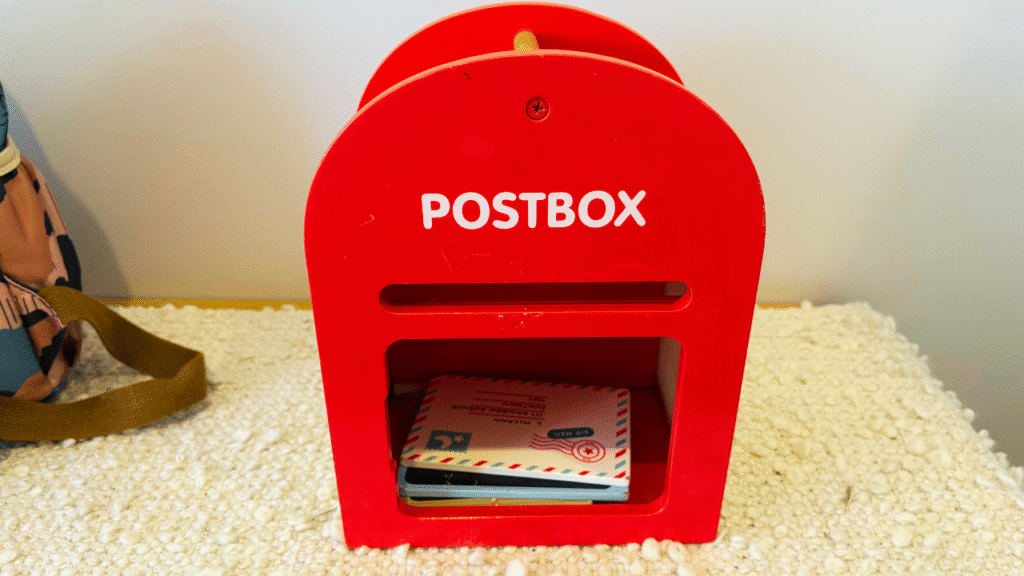
Tiny transitions between parts of the day can be softened with connection rituals:
- A shared snack after nap
- Singing the same bedtime song
- Watching the mail get posted in your inside box
These anchor points support emotional regulation and security.
Ready to Bring More Calm and Flow to Your Days?
Download my free PDF guide: Creating Calmer Days with Toddlers: A Simple Rhythm Starter Kit – a gentle, Waldorf-inspired guide to help you set up your own home rhythm with ease.
And if you’re ready to go deeper, check out my full eBook: Family Flow Starter Kit – packed with rhythm ideas, practical routines, and gentle guidance to support your family’s well-being all year round.
If you’re feeling called to create your own peaceful rhythm at home, I’d love to support you. This blog is full of gentle ideas, seasonal guides, and Waldorf-inspired resources to help you build a flow that works for your family. Check out this blog as well which helped me with ideas to build my own rhythm.
Watch a video of a peaceful day of our rhythm on YouTube below:
Have a question or want to share your rhythm? Comment below or reach out – I’d love to hear from you.
Warmly,
— Melany
Disclaimer
This post includes paid links to my own products. I only share resources I’ve created with care and love, and that I believe can truly support your family rhythm journey. Thank you for supporting my work!

Leave a Reply